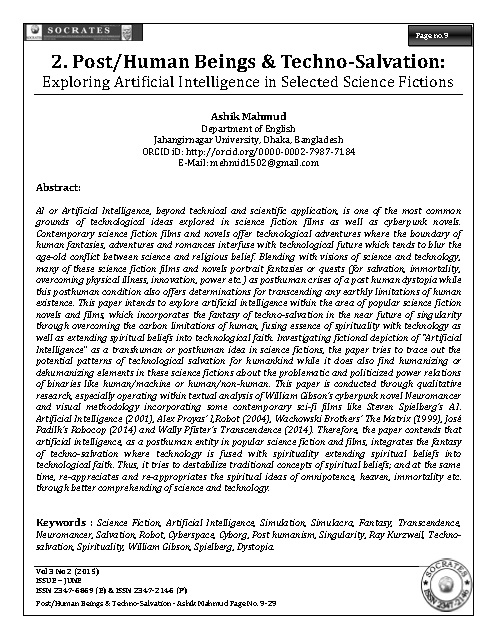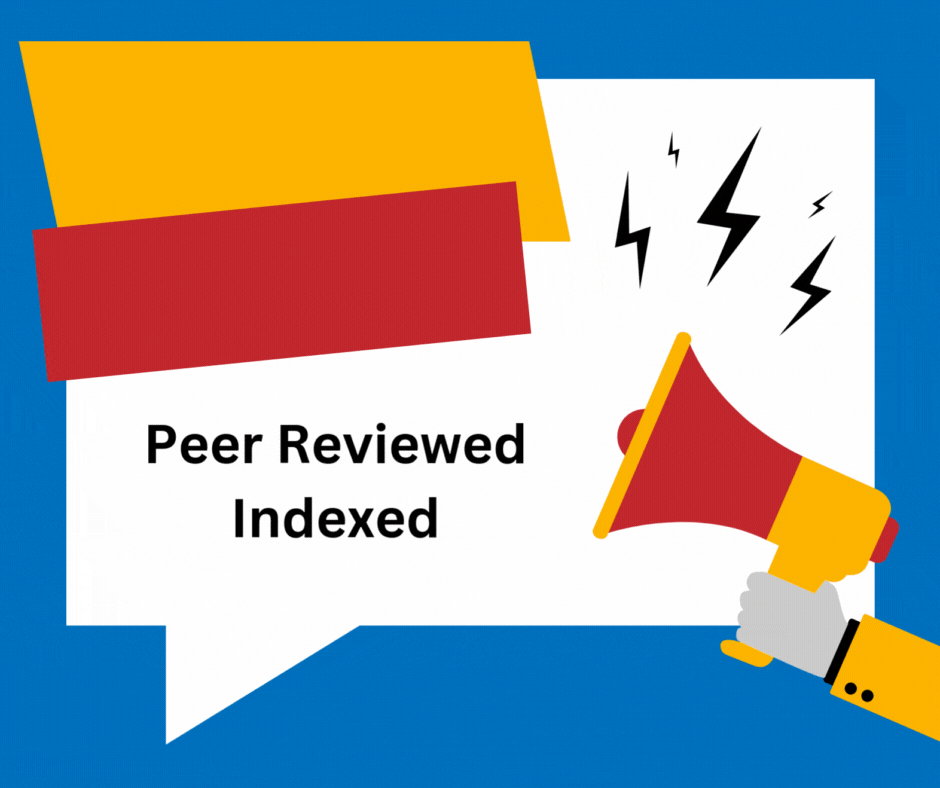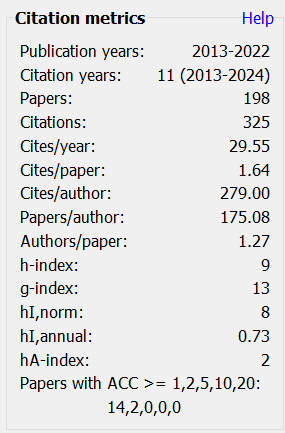Post/Human Beings & Techno-Salvation
Exploring Artificial Intelligence in Selected Science Fictions
Keywords:
Science Fiction, Artificial Intelligence, Simulation, Simulacra, Fantasy, Transcendence, Neuromancer, Salvation, Robot, Cyberspace, Cyborg, Post humanism, Singularity, Ray Kurzweil, Technosalvation, Spirituality, William Gibson, Spielberg, DystopiaAbstract
AI or Artificial Intelligence, beyond technical and scientific application, is one of the most common grounds of technological ideas explored in science fiction films as well as cyberpunk novels. Contemporary science fiction films and novels offer technological adventures where the boundary of human fantasies, adventures and romances interfuse with technological future which tends to blur the age-old conflict between science and religious belief. Blending with visions of science and technology, many of these science fiction films and novels portrait fantasies or quests (for salvation, immortality, overcoming physical illness, innovation, power etc.) as posthuman crises of a post human dystopia while this posthuman condition also offers determinations for transcending any earthly limitations of human existence. This paper intends to explore artificial intelligence within the area of popular science fiction novels and films, which incorporates the fantasy of techno-salvation in the near future of singularity through overcoming the carbon limitations of human, fusing essence of spirituality with technology as well as extending spiritual beliefs into technological faith. Investigating fictional depiction of “Artificial Intelligence” as a transhuman or posthuman idea in science fictions, the paper tries to trace out the potential patterns of technological salvation for humankind while it does also find humanizing or dehumanizing elements in these science fictions about the problematic and politicized power relations of binaries like human/machine or human/non-human. This paper is conducted through qualitative research, especially operating within textual analysis of William Gibson’s cyberpunk novel Neuromancer and visual methodology incorporating some contemporary sci-fi films like Steven Spielberg’s A.I. Artificial Intelligence (2001), Alex Proyas’ I,Robot (2004), Wachowski Brothers’ The Matrix (1999), José Padilh’s Robocop (2014) and Wally Pfister’s Transcendence (2014). Therefore, the paper contends that artificial intelligence, as a posthuman entity in popular science fiction and films, integrates the fantasy of techno-salvation where technology is fused with spirituality extending spiritual beliefs into technological faith. Thus, it tries to destabilize traditional concepts of spiritual beliefs; and at the same time, re-appreciates and re-appropriates the spiritual ideas of omnipotence, heaven, immortality etc. through better comprehending of science and technology.
Downloads
Metrics
References
Artificial Intelligence. Dir. Steven Spielberg. Warner Bros. Picture, 2001. Film.
Gibson, William. Neuromancer. New York: Ace Books. 1984. Print.
I, Robot. Dir. Alex Proyas. Twentieth Century Fox Film Corporation, 2004. Film
Robocop. Dir. Jose Padilh. Columbia Pictures, 2014. Film
The Matrix. Dir. Andy Wachowski and Larry Wachowski. Warner Bros. Pictures, 1999. Film.
Transcendence. Dir. Wally Pfister. Warner Bros. Pictures, 2014. Film.
Secondary Sources:
“A.I. Artificial intelligence (2001 film)”. Wikipedia, the free encyclopedia. Wikimedia Foundation, Inc. 08 Mar 2014. Web. 20 May 2014.
Baudrillard, Jean. Simulacra and Simulation. Michigan: University of Michigan Press, 1995. Print.
Bell, David. An Introduction to Cyberculture. New York: Routledge, 2005. Print
Brockman, John. “The Singularity: A Talk with Ray Kurzweil” Retrieved from http://www.edge.org
Brooker, Peter. A concise Glossary of Cultural Theory. London: Arnold, 1999. Print.
Durham, Meenakshi Gigi & Douglas M Kellner. (Eds). Media and Cultural Studies: Key Works. New Jersey: Blackwell, 2005. Print.
During, Simon. Cultural Studies: A Critical Introduction. London and new York: Routledge, 2008. Print.
Fiske, John. Understanding Popular Culture. Boston: Unwin Hyman, 1989. Print.
Geraci, Robert M. Apocalyptic AI: Visions of Heaven In Robotics, Artificial Intelligence, And. Virtual Reality. New York and Oxford: Oxford University Press, 2010. Print.
Hayles, N. Katherine. How We Became Posthuman: Virtual Bodies in Cybernetics, Literature, and Informatics.Chicago: University og Chicago Press. Print.
“I, Robot (2004 film)”. Wikipedia, the free encyclopedia. Wikimedia Foundation, Inc. 08 Mar 2014. Web. 20 May 2014.
Jameson, Fredric. Postmodernism or, the Cultural Logic of Capitalism. North Carolina: Duke University Press. Print.
Kelly, Patrick, & Kessel J. (Eds.). Rewired: The Post Cyberpunk Anthology. San Francisco: Tachyan Publication, 2007. Print.
Kothari, C.R. Research methodology: Methods & Techniques. 2nd Ed. New Delhi: New Age PL, 2004. Print
Kurzweil, Edith. Literature and Psychoanalysis. Columbia Universuty Press, 1983. Print.
Kurzweil, Ray. The Age of Spiritual Machine: When Computer Exceeds Human Intelligence. New York: Penguin Group, 1999. Print
Leitch, Vincent, B. ed., The Norton Anthology of Theory and Criticism. Norton, 2001. Print.
McCaffery, Larry. The Desert of the Real: The Cyberpunk Controversy. Mississippi Review, 1988. Print.
McCaffery, Larry (Ed.). Storming the Reality Studio: A Casebook of Cyberpunk and Postmodern Fiction. Duke University Press, 1994. Print.
McHale, B. Postmodernist Fiction. London: Routledge, 1987. Print.
Midgley, Mary. Science as Salvation: A Modern Myth and its Meaning. London & NY: Routledge, 1992. Print
Morley, David and Kuan-Hsing Chen. Stuart Hall: Critical Dialogues in Cultural Studies. London and New York: Routledge, 1996. Print.
Monaco, James. How to Read a Film: Movies, Media, Multimedia. New York and Oxford: OUP, 2000. Print.
Moravec, Hans. Mind Children. Cambridge: Harvard University Press, 1989. Print
Nayar, Promod K. An Introduction to Cultural Studies. New Delhi: Viva Books, 2008. Print.
Nelmes, Jill (ed.). An Introduction to Film Studies. London and New York : Routledge, 1999. Print.
Noble, David. The Religion of Technology: The Divinity of Man and the Spirit of Invention. 2nd Ed. NY: Random House, 1999. Print
Pickering, Michael (Ed.). Research Methods for Cultural Studies. Edinburgh: EUP, 2011. Print.
Raynor, William. The International Dictionary of Artificial Intelligence. Chicago: Glenake Publishing Company Ltd., 1999.Print
Rose, Gillian. Visual Methodologies: An Introduction to the Interpretation of Visual Methods, London: Sage Publications, 2001. Print.
Storey, John (Ed.). Cultural Theory and Popular Culture: An Introduction. Essex: Longman, 1998. Print.
Taylor, Victor, and Winquist C. (Eds.). Encyclopedia of Postmodernism. London: Routledge, 2001. Print.
“Transcendence (2014 film)”. Wikipedia, the free encyclopedia. Wikimedia Foundation, Inc. 08 May 2014. Web. 20 May 2014.
“Transhumanism.” Wikipedia, the free encyclopedia. Wikimedia Foundation, Inc. 6 May 2014.Web.2 June 2014.
Tyson, Lois. Critical Theory Today. London and New York: Routledge, 2008. Ptint.
Whitby, Blay. Artificial intelligence: A Beginner’s Guide. Oxford: Oneworld Publication, 2006. Print.
Wolfe, Cary. “Posthumanities”. Cary Wolfe. N. p., 2010. Web.04 May, 2013.
Wolfe, Cary. What Is Posthumanism? London: University of Minnesota Press, 2010. Print.

Downloads
Published
How to Cite
Issue
Section
License
Revised Copyright/CC license that applies to all the articles published after 05-02-2017
Attribution-NonCommercial 4.0 International (CC BY-NC 4.0)

Copyright/CC license that applies to all the articles published before 05-02-2017
Attribution-Non Commercial-No Derivatives 4.0 International (CC BY-NC-ND 4.0)

Author(s) will retain all the right except commercial and re-publishing rights. In the case of re-publishing, they will have to obtain written permission from the journal. Additional licensing agreements (Creative Commons licenses) grants rights to readers to copy, distribute, display and perform the work as long as you give the original author(s) credit, they can not use the works for commercial purposes and are not allowed to alter, transform, or build upon the work. For any reuse or distribution, readers and users must make clear to others the license terms of this work. Any of these conditions can be waived if you get permission from the copyright holders. Nothing in this license impairs or restricts the authors’ rights. To view a copy of this license, visit http://creativecommons.org/licenses/by-nc-nd/4.0/ or send a letter to Creative Commons, 171 Second Street, Suite 300, San Francisco, California, 94105, USA.
Research Papers published in SOCRATES are licensed under an Attribution-NonCommercial-NoDerivatives 4.0 International (CC BY-NC-ND 4.0)












